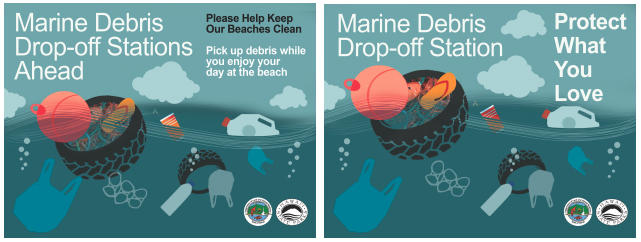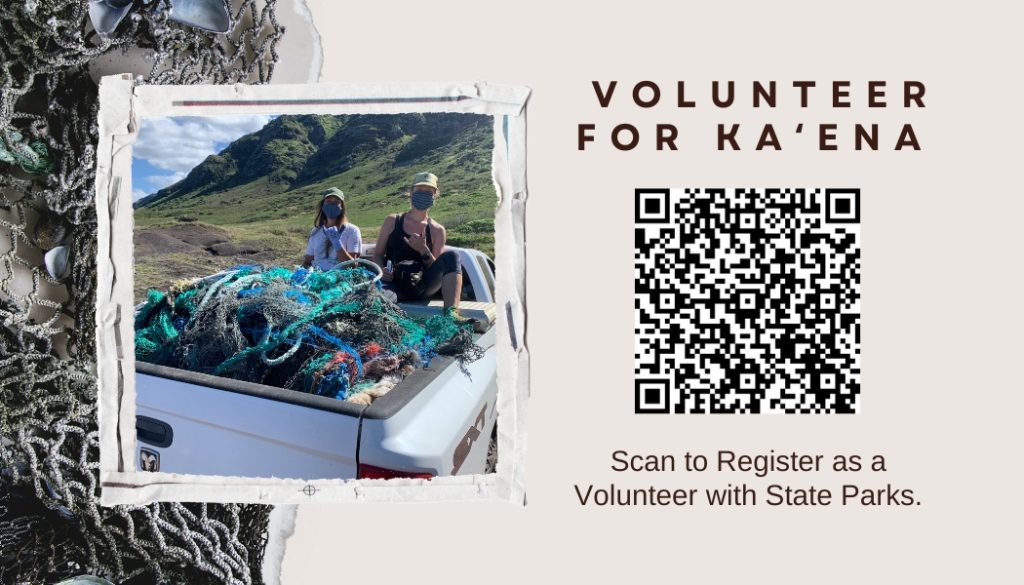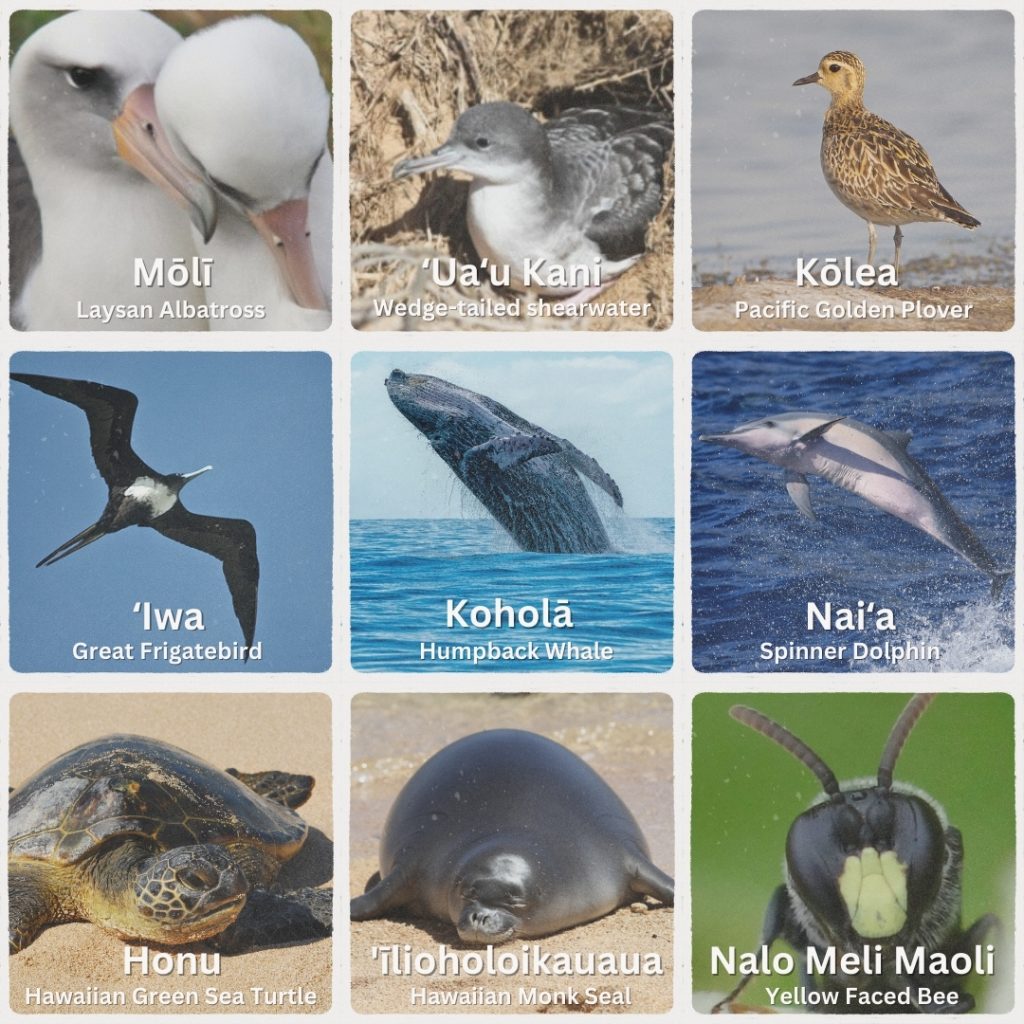
**IMPORTANT PARK NOTICES**
Monitor local surf and weather reports prior to your park visit.
•
[KAUAʻI] UPDATED 4/16/24 – Kalalau Trail, Nāpali Coast SWP has REOPENED and the Kauai Northshore Shuttle to Ha’ena SP has RESUMED.
•
[O’AHU] UPDATED 4/18/24 – Vehicle access road in the Mokuleʻia Section of Ka’ena Point State Park is CLOSED due to road conditions. Keawa’ula Section of Ka’ena Point State Park: water pump down; comfort station closed; portable toilets available.
•
[KAUAʻI] UPDATED 3/18/24 – Kōkeʻe State Park: The gate to Puʻu O Kila Lookout will be closed to vehicular traffic due to road repairs beginning 3/19/24. The lookout will still be accessible by pedestrians, parking is available at Kalalau lookout.
Ka‘ena Point State Park
UPDATED 4/18/24 – Vehicle access road in the Mokuleʻia Section of Ka’ena Point State Park is CLOSED due to road conditions.
.
Keawa’ula Section of Ka’ena Point State Park: water pump down; comfort station closed; portable toilets available.
Hours Daily 6:00am to 7:00pm Permitted Gate Vehicle Access Permit and login required:
Trail Name
Description
Ka‘ena Point State Park is a relatively remote and wild coastline park with hiking, picnicking, and shoreline fishing opportunities. The park wraps around the northwest corner of the island of Oahu and is composed of two sections: the Ka‘ena Point Mokuleʻia Section (north shore of Oʻahu) and the Ka‘ena Point Keawa’ula Section (west side of Oahu). Ka‘ena Point State Park is the gateway to Ka‘ena Point Natural Area Reserve at O‘ahu’s most northwestern point.
In the Keawaʻula section, there is a large sandy beach at Keawa’ula Bay with board surfing and body surfing for experts and swimming only during calm conditions in the summer; lifeguard services and a comfort station is available.
In the Mokuleʻia Section, there are several sandy or rocky coves, tide pools, sand dunes, and endangered invertebrate habitats. There are no lifeguards or comfort station. Permitted vehicles utilize marked roads in this section, pedestrians should follow shoreline trail signs.
Learn more about Kaʻena and its resources on the interpretive signs placed throughout the Kaʻena Point Trail. Remember to pack out, what you pack in. Mahalo for helping Hawaii State Parks conserve and protect our valuable natural and cultural resources.
Additional Info
- The hike to the Kaʻena Natural Area Reserve at the point from either section trailhead is about 2.5 miles one-way along a volcanic coast with mountain and ocean views.
- Observe marine mammals, sea birds, native invertebrate, and coastal plants from a distance. NOAA regulation prohibits swimming with, approaching, or remaining within 50 yards of spinner dolphins. Keep a 50ft distance on land and in water for Hawaiian Monk Seals.
- Each section offers stunning geological features; from sand dunes and fossilized reef, to a sea arch and a large sea cave known as Kaneana, the legendary home of Nanaue the shark man.
- Hot and dry area with little shade. Sandy and rocky terrain.
- No drinking water available on either section, no restrooms on the Mokuleʻia section.
- Dogs, drones, camping, and commercial activity is not permitted. Park Rules.
Native Plants & Wildlife of Kaʻena
Hike Pono
As you hike Kaʻena Point State Park, keep an eye out for the new Marine Debris Drop-off Stations signs pictured below. You could mālama the park while enjoying your hike.
 Marine debris consists of man-made objects cast adrift in the ocean, either washed into the water from land-based sources or discarded from vessels at sea. In Hawaiʻi, marine debris drifts in to our waters and comes ashore all year. Marine debris of any size poses a threat to the health and safety of the human population and the fringing coral reef that protects our shorelines. Marine debris may cause entanglement to seabirds, sea turtles, and marine mammals. All marine species could also potentially digest the material.
Marine debris consists of man-made objects cast adrift in the ocean, either washed into the water from land-based sources or discarded from vessels at sea. In Hawaiʻi, marine debris drifts in to our waters and comes ashore all year. Marine debris of any size poses a threat to the health and safety of the human population and the fringing coral reef that protects our shorelines. Marine debris may cause entanglement to seabirds, sea turtles, and marine mammals. All marine species could also potentially digest the material.

Several signs are visible near the coastal roads and trails. We ask that park users place marine debris found a long the shoreline beneath these signs for staff removal, as they serve as Marine Debris Drop-off Stations. Please refrain from leaving trash at these Drop-off Stations, remember to pack out your garbage. As a courtesy reminder, please adhere to all park rules, i.e. no dogs, no drones, no camping.
long the shoreline beneath these signs for staff removal, as they serve as Marine Debris Drop-off Stations. Please refrain from leaving trash at these Drop-off Stations, remember to pack out your garbage. As a courtesy reminder, please adhere to all park rules, i.e. no dogs, no drones, no camping.
Kaʻena is traditionally known for its marine resources. Fishers that use the park should properly dispose of their derelict fishing line in the fishing debris collection bins installed in the park by NOAA partner Hawaiʻi Marine Animal Response. The bins are used to collect used line and hooks so that they can be recycled or disposed of properly preventing derelict fishing gear from entering the ocean from the park.
Volunteer Opportunities
Volunteers contribute hours of stewardship to Ka‘ena Point State Park by participating in marine debris removal, ecosystem restoration, and visitor education on the Mokuleʻia and Mākua-Keawaʻula sections.
If you are interested in contributing to these efforts in State Parks, please browse the Volunteer Events Calendar , scan the QR code below, or Register As A Volunteer Here.
Let’s Protect What We Aloha and Mālama Kaʻena Point State Park.
Vehicle Access Special Use Permit
Kaena Vehicle Permit Application Website
2024 Vehicle Permits
The Vehicle Access Special Use Permit is required to drive a vehicle into Ka‘ena Point State Park Reserve, Mokuleʻia Section, beyond the gate and the paved road that ends at the gravel parking area. Initiated in 2015 primarily as a cultural and natural resources management tool that was generally supported by the community to protect Ka‘ena, this permit system aimed to curtail 20 years of increasing landscape degradation caused by uncontrolled four-wheel drive vehicle use in the reserve. Permit conditions require drivers to remain on a limited number of designated dirt roads and stress that this is not a four-wheel drive recreation area – but that the designated roads are for responsible access for fishing, sightseeing, coastal access and to get to the Natural Area Reserve and the point itself.
Additional Info
- The current decal must be affixed to the rear bumper or a comparable location visible from the rear of the licensed vehicle, and your paper copy of the permit must be in the vehicle. Both are required by permit conditions.
- The Kaʻena Point Vehicle Access Permit allows vehicles to access designated roads in the permitted section provided on the KP-Designated-Road-Map-2024. During closed park hours, permit holders are ONLY allowed to enter the park from the Dillingham airfield entrance and directly transit through the vehicle access permitted gate at the end of the road. Stopping, standing, or parking in this transit area of the park during closed hours is not permitted.
- Dogs, drones, camping, and ground fires are not permitted, adhere to all park signs, road signs, and Park Rules at all times.
- Violations of the Kaʻena Point Vehicle Access Permit Special Conditions & Rules may lead to the revocation of the users permit.
- Kaena Vehicle Permit FAQ
- KP-Designated-Road-Map-2024





